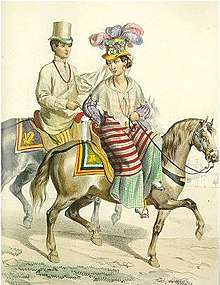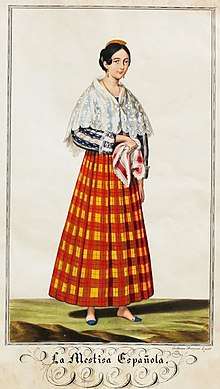Mestizo
Mestizo (/mɛˈstiːzoʊ, mɪ-/;[1] Spanish: [mesˈtiθo] (![]()
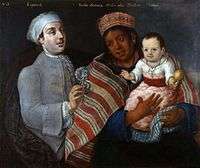 A casta painting of a Spanish man and a Peruvian woman with a Mestizo child, 1770 | |
| Regions with significant populations | |
|---|---|
| Latin America United States Philippines Mariana Islands Aruba | |
| Languages | |
| Predominantly Spanish, Portuguese, English, Indigenous languages of the Americas, Philippine languages, Papiamento, Chamorro | |
| Religion | |
| Predominantly Christianity (majority Roman Catholic, Protestant especially Pentecostal and Evangelical), Indigenous beliefs | |
| Related ethnic groups | |
| Amerindian peoples European peoples Pardos Métis |
The term mestizaje – taking as its root mestizo is a term that came into usage in the twentieth century for racial mixing and was not a colonial-era term.[3] In the modern era, is used to denote the positive unity of race mixtures in modern Latin America. This is ideological stance is in contrast to the term miscegenation, which usually has negative connotations.[4]
In the modern era, particularly in Hispanic America, mestizo has become more of a cultural term, with the term Indian being reserved exclusively for people who have maintained a separate indigenous ethnic identity, language, tribal affiliation, etc. In late nineteenth- and early twentieth-century Peru, for instance, mestizos denoted those peoples with evidence of "mixed" ethno-racial descent and access—usually monetary access, but not always—to secondary educational institutions. This conception changed by the 1920s, especially after the national advancement and spiritual economy of indigenismo.
To avoid confusion with the original usage of the term mestizo, mixed people started to be referred to collectively as castas. In some Latin American countries, such as Mexico, the concept of the mestizo became central to the formation of a new independent identity that was neither wholly Spanish nor wholly indigenous. The word mestizo acquired its current meaning, being used by the government to refer to all Mexicans who do not speak indigenous languages,[5][6] including people of complete European or indigenous descent, as well as those of Asian and African ancestry.[7]
During the colonial era of Mexico, "Mestizo" was a category which was used rather flexibly to register births in local parishes, although its use did not follow any pattern of strict genealogy. With Mexican independence, in academic circles created by the "Mestizaje" or "Cosmic Race" ideology, scholars asserted that Mestizos are the result of the mixing of all the races. After the Mexican Revolution the government, in its attempts to create an unified Mexican identity with no racial distinctions, adopted and actively promoted the "Mestizaje" ideology.[5]
The Portuguese cognate, mestiço, historically referred to any mixture of Portuguese and local populations in the Portuguese colonies. In colonial Brazil, most of the non-enslaved population was initially mestiço de indio, i.e. mixed Portuguese and native Brazilian. There was no descent-based casta system, and children of upper-class Portuguese landlord males and enslaved females enjoyed privileges higher than those given to the lower classes, such as formal education. Such cases were not so common and the children of enslaved women tended not to be allowed to inherit property. This right of inheritance was generally given to children of free women, who tended to be legitimate offspring in cases of concubinage (this was a common practice in both Amerindian and African customs).
In the Philippines, which was a Captaincy General of Spain, the term mestizo was used to refer to a Filipino with any foreign ancestry, and usually shortened as Tisoy.
In Ontario and western Canada, the Métis people are a distinct ethnic community composed of the descendants of Europeans (usually French or Scottish, sometimes English) involved in the fur trade and Canadian First Nations peoples (especially Cree and Anishinaabe. For generations they developed a separate culture of hunters and trappers, and were concentrated in the Red River Valley. Métis does not include people of mixed European and Inuit ancestry). As used in Quebec, however, where there was much earlier contact between French and other European colonists and First Nations peoples, the term refers to anyone of mixed ancestry from these two groups.
Etymology
The Spanish word mestizo is from Latin mixticius, meaning mixed.[8][9] Its usage was documented as early as 1275, to refer to the offspring of an Egyptian/Afro/Hamite and a Semite/Afro Asiatic.[10] This term was first documented in English in 1582.[11]
Modern-day use
In the United States, Canada and other English-speaking countries and cultures, mestizo, as a loanword from Spanish, is used to mean a person of mixed European and American Indian descent exclusively. It is generally associated with persons connected to a Latin American culture or of Latin American descent. This is a more limited concept than that found in Romance languages (especially Portuguese, which has terms that are not cognate with mestizo for such admixture, and the concept of mestiço is not particularly associated with Amerindian ancestry at all). It is related to the particular racial identity of historical Amerindian-descended Hispanic and Latino American communities in an American context.
In English-speaking Canada, Canadian Métis (with upper-case), as a loanword from French, refers to persons of mixed French or European and Indigenous ancestry, who were part of a particular ethnic group. French-speaking Canadians, when using the word métis, are referring to Canadian Métis ethnicity, and all persons of mixed Amerindian and European ancestry.
In all other French-speaking countries, the term would apply to the broader concept of mixed people in general (métis with lowercase), as it does for speakers of Spanish. The usual French term to refer to mixed-ethnicity people in general is "mulâtre", which is considered elsewhere pejorative as it was often used to denigrate enslaved persons. In the United States, Métis Americans and Mestizo Americans are two distinct racial and ethno-racial identities, as reflected in the use of French and Spanish loanwords, respectively.
In the Philippines, the word mestizo usually refers to a Filipino with combined Indigenous and European ancestry. Occastionally it is used for a Filipino with apparent Chinese ancestry, who will also be referred to as 'chinito'. The latter was officially listed as a "mestizo de sangley" in birth records of the 19th century, with 'sangley' referring to the Hokkienese word for business, 'seng-li'.
In the Portuguese-speaking world, the contemporary sense has been the closest to the historical usage from the Middle Ages. Because of important linguistic and historical differences, mestiço (mixed, mixed-ethnicity, miscegenation, etc.) is separated altogether from pardo (which refers to any kind of brown people) and caboclo (brown people originally of European–Amerindian admixture, or assimilated Amerindians). The term mestiços can also refer to fully African or East Asian in their full definition (thus not brown). One does not need to be a mestiço to be classified as pardo or caboclo.
In Brazil specifically, at least in modern times, all non-Indigenous people are considered to be a single ethnicity (os brasileiros. Lines between ethnic groups are historically fluid); since the earliest years of the Brazilian colony, the mestiço (Portuguese pronunciation: [meʃˈt(ʃ)isu], [miʃˈt(ʃ)isu]) group has been the most numerous among the free people. As explained above, the concept of mestiço should not be confused with mestizo as used in either the Spanish-speaking world or the English-speaking one. It does not relate to being of Amerindian ancestry, and is not used interchangeably with pardo, literally "brown people." (There are mestiços among all major groups of the country: Indigenous, Asian, pardo, and African, and they likely constitute the majority in the three latter groups.)
In Saint Barthélemy, the term mestizo refers to people of mixed European (usually French) and East Asian ancestry. This reflects a different colonial era, when the French recruited East Asians as workers.[12]
Cognates
Mestizo (Spanish: [mesˈtiθo] or [mesˈtiso]), mestiço (Portuguese: [mɨʃˈtisu], [mesˈt(ʃ)isu] or [miʃˈt(ʃ)isu]), métis (French: [meˈtis]), mestís (Catalan: [məsˈtis]), Mischling (German: [mɪʃˈlɪŋɡ]), meticcio (Italian: [meˈtittʃo]), mestiezen (Dutch: [mɛsˈtizə(n)]), mestee (Middle English: [məsˈtiː]), and mixed (English) are all cognates of the Latin word mixticius.
Mestizo as a colonial-era category
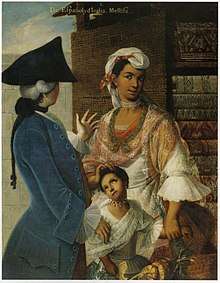
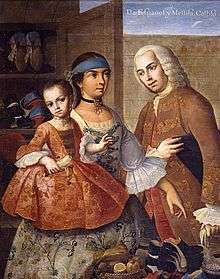
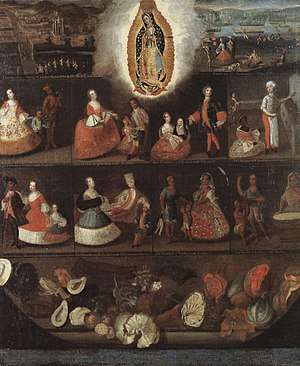
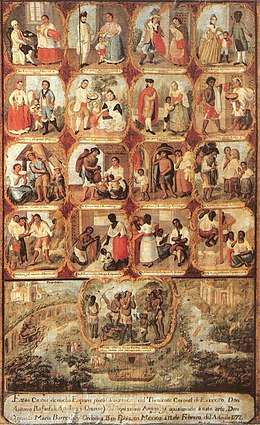
In the Spanish colonial period, the Spanish developed a complex set of racial terms and ways to describe difference. Although this has been conceived of as a "system," and often called the sistema de castas or sociedad de castas, archival research shows that racial labels were not fixed throughout a person's life.[13] Artwork created mainly in eighteenth-century Mexico, "casta paintings," show groupings of racial types in hierarchical order, which has influenced the way that modern scholars have conceived of social difference in Spanish America.[13]
During the initial period of colonization of the Americas by the Spanish, there were three chief categories of ethnicities: European white or Spaniard (español), Amerindian (indio), and African (negro). Throughout the territories of the Spanish Empire in the Americas, ways of differentiating individuals in a racial hierarchy, often called in the modern era the sistema de castas or the sociedad de castas, developed where society was divided based on color, calidad (status), and other factors.
The main divisions were as follows:
- Español (fem. española), i.e. Spaniard – person of Spanish or other European ancestry; a blanket term, subdivided into Peninsulares and Criollos
- Peninsular – a European born in Spain who later settled in the Americas;
- Criollo (fem. criolla) – a person of Spanish or other European descent born in the Americas;
- Castizo (fem. castiza) – a person with primarily European and some Amerindian ancestry born into a mixed family; the offspring of a castizo and an español was considered español. Offspring of a castizo/a of an Español/a returned to Español/a.
- Mestizo (fem. mestiza) – a person of extended mixed European and Amerindian ancestry;
- Indio (fem. India) – a person of pure Amerindian ancestry;
- Pardo (fem. parda) – a person of mixed White, Amerindian and African ancestry; sometimes a polite term for a black person;
- Mulato (fem. mulata) – a person of mixed White and African ancestry;
- Zambo – a person of mixed African and Amerindian ancestry;
- Negro (fem. negra) – a person of African descent, primarily former enslaved Africans and their descendants.
In theory, and as depicted in some eighteenth-century Mexican casta paintings, the offspring of a Castizo/a [mixed Spanish - Mestizo] and an Español/a could be considered Español/a, or "returned" to that status.[14]
Racial labels in a set of eighteenth-century Mexican casta paintings by Miguel Cabrera:
- De Español e India, nace Mestiza
- De Español y Mestiza, nace Castiza
- De Castizo y Española, nace Española
- De Español y Negra, nace Mulata
- De Español y Mulata, nace Morisca
- De Español y Morisca, nace Albino
- De Español y Albina, nace Torna atrás
- De Español y Torna atrás, "Tente en el ayre"
- De Negro y India, Chino Cambuja
- De Chino Cambujo y India, Loba
- De Lobo y India, Albarazado
- De Albarazado y Mestiza, Barcino
- De Indio y Barcina, Zambaiga
- De Castizo y Mestiza, Chamizo
- Indios Gentiles (Barbarian Meco Indians)
In the early colonial period, the offspring of Españoles and Indias were raised either in the Hispanic world, if the father recognized the offspring as his natural child; or the child was raised in the indigenous world of the mother if he did not. As early as 1533, Charles V mandated the high court (Audiencia) to take the children of Spanish men and indigenous women from their mothers and educate them in the Spanish sphere.[15] This mixed group born out of Christian wedlock increased in numbers, generally living in their mother's indigenous communities.[15]
Mestizos were the first group in the colonial era to be designated as a separate category from European whites (Españoles) and enslaved African blacks (Negros) and were included in designation of "vagabonds" (vagabundos) in 1543 in Mexico. Although mestizos were often classified as castas, they had a higher standing than any mixed-race person since they did not have to pay tribute, the men could be ordained as priests, and they could be licensed to carry weapons, in contrast to negros, mulattoes, and other castas. Unlike blacks and mulattoes, mestizos had no enslaved ancestors.[16] Intermarriage between Españoles and mestizos resulted in offspring designated castizos ("three-quarters white"), and the marriage of a castizo/a to an Español/a resulted in the restoration of Español/a status to the offspring. Don Alonso O’Crouley observed in Mexico (1774), "If the mixed-blood is the offspring of a Spaniard and an Indian, the stigma [of race mixture] disappears at the third step in descent because it is held as systematic that a Spaniard and an Indian produce a mestizo; a mestizo and a Spaniard, a castizo; and a castizo and a Spaniard, a Spaniard. The admixture of Indian blood should not indeed be regarded as a blemish, since the provisions of law give the Indian all that he could wish for, and Philip II granted to mestizos the privilege of becoming priests. On this consideration is based the common estimation of descent from a union of Indian and European or creole Spaniard."[17] O’Crouley states that the same process of restoration of racial purity does not occur over generations for European-African offspring marrying whites. “From the union of a Spaniard and a Negro the mixed-blood retains the stigma for generations without losing the original quality of a mulato."[18]
The Spanish colonial regime divided groups into two basic legal categories, the Republic of Indians (República de Indios) and the Republic of Spaniards (República de Españoles) comprised European whites (Españoles) and all other non-Indians. Indians were free vassals of the crown, whose commoners paid tribute while indigenous elites were considered nobles and tribute exempt, as were mestizos. Indians were nominally protected by the crown, with non-Indians —mestizos, blacks, and mulattoes— forbidden to live in indigenous communities. Mestizos and Indians in Mexico habitually held each other in mutual antipathy. This was particularly the case with commoner Indians against mestizos, some of whom infiltrated their communities and became part of the ruling elite. Spanish authorities turned a blind eye to the mestizos' presence, since they collected commoners' tribute for the crown and came to hold offices. They were useful intermediaries for the colonial state between the Republic of Spaniards and the Republic of Indians.[19]
A person's legal racial classification in colonial Spanish America was closely tied to social status, wealth, culture and language use. Wealthy people paid to change or obscure their actual ancestry. Many indigenous people left their traditional villages and sought to be counted as mestizos to avoid tribute payments to the Spanish.[20] Many indigenous people, and sometimes those with partial African descent, were classified as mestizo if they spoke Spanish and lived as mestizos.
In colonial Venezuela, pardo was more commonly used instead of mestizo. Pardo means being mixed without specifying which mixture;[21] it was used to describe anyone born in the Americas whose ancestry was a mixture of European, Amerindian and African.[22]
When the Mexican republic was established in 1824, legal racial categories ceased to exist. The production of casta paintings in New Spain ceased at the same juncture, after almost a century as a genre.
Because the term had taken on a myriad of meanings, the designation "mestizo" was removed from census counts in Mexico and is no longer in use.[11]
Gallery
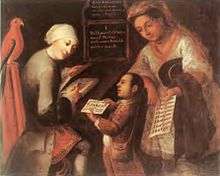 Español, India, Mestizo. José Joaquín Magón. 18th c Mexico
Español, India, Mestizo. José Joaquín Magón. 18th c Mexico Casta painting. "Spanish and Indian produce Mestizo", 1780.
Casta painting. "Spanish and Indian produce Mestizo", 1780. Español, India, Mestizo.
Español, India, Mestizo. Castizo, Mestiza, Chamizo. Miguel Cabrera 1763.
Castizo, Mestiza, Chamizo. Miguel Cabrera 1763.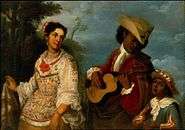 Mulatto and Mestiza, produce Mulatto, he is Torna Atrás [throwback]" by Juan Rodríguez Juárez
Mulatto and Mestiza, produce Mulatto, he is Torna Atrás [throwback]" by Juan Rodríguez Juárez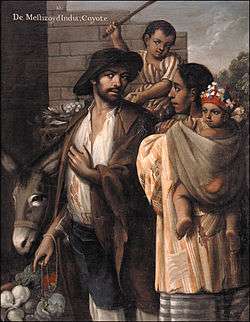 Mestizo, India, Coyote. Miguel Cabrera 1763.
Mestizo, India, Coyote. Miguel Cabrera 1763.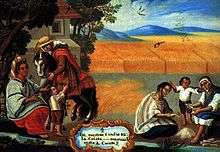 De mestizo e India, sale coiote (From a Mestizo man and an Amerindian woman, a Coyote is begotten).
De mestizo e India, sale coiote (From a Mestizo man and an Amerindian woman, a Coyote is begotten). Mestizo, Albarazada, Barcina.
Mestizo, Albarazada, Barcina.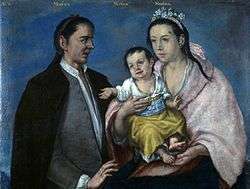 Mestizo, Mestiza, Mestizo Sample of a Peruvian casta painting, showing intermarriage within a casta category.
Mestizo, Mestiza, Mestizo Sample of a Peruvian casta painting, showing intermarriage within a casta category.
Spanish-speaking North America
Mexico
The large majority of Mexicans can be classified as "Mestizos", meaning in modern Mexican usage that they identify fully neither with any indigenous culture nor with a particular non-Indigenous heritage, but rather identify as having cultural traits incorporating both indigenous and European elements. In Mexico, Mestizo has become a blanket term which not only refers to mixed Mexicans but includes all Mexican citizens who do not speak indigenous languages[5] even Asian Mexicans and Afro-Mexicans.[23]
Sometimes, particularly outside of Mexico, the word "mestizo" is used with the meaning of Mexican persons with mixed Indigenous and European blood. This usage does not conform to the Mexican social reality where a person of pure indigenous genetic heritage would be considered mestizo either by rejecting his indigenous culture or by not speaking an indigenous language,[24] and a person with none or very low percentage of indigenous genetic heritage would be considered fully indigenous either by speaking an indigenous language or by identifying with a particular indigenous cultural heritage.[7] In the Yucatán peninsula the word mestizo has a different meaning to the one used in the rest of Mexico, being used to refer to the Maya-speaking populations living in traditional communities, because during the caste war of the late 19th century those Maya who did not join the rebellion were classified as mestizos.[24] In Chiapas, the term Ladino is used instead of mestizo.[25]
Due to the extensiveness of the modern definition of Mestizo, various publications offer different estimations of this group, some try to use a biological, racial perspective and calculate the Mestizo population in contemporary Mexico as being around a half and two thirds of the population,[26] while others use the culture-based definition, and estimate the percentage of Mestizos as high as 90%[5] of the Mexican population, several others mix-up both due lack of knowledge in regards to the modern definition and assert that mixed ethnicity Mexicans are as much as 93% of Mexico's population.[27] Paradoxically to its wide definition, the word Mestizo has long been dropped of popular Mexican vocabulary, with the word even having pejorative connotations,[24] which further complicates attempts to quantify Mestizos via self-identification.
While for most of its history the concept of Mestizo and Mestizaje has been lauded by Mexico's intellectual circles, in recent times the concept has been target of criticism, with its detractors claiming that it delegitimizes the importance of ethnicity in Mexico under the idea of "(racism) not existing here (in Mexico), as everybody is Mestizo."[28] In general, the authors conclude that Mexico introducing a real racial classification and accepting itself as a multicultural country opposed to a monolithic Mestizo country would bring benefits to the Mexican society as a whole.[29]
Genetic studies
A 2012 study published by the Journal of Human Genetics found that the Y-chromosome (paternal) ancestry of the average Mexican Mestizo was predominately European (64.9%), followed by Native American (30.8%), and African (4.2%). The European ancestry was more prevalent in the north and west (66.7–95%) and Native American ancestry increased in the centre and south-east (37–50%), the African ancestry was low and relatively homogeneous (0–8.8%).[30] The states that participated in this study were Aguascalientes, Chiapas, Chihuahua, Durango, Guerrero, Jalisco, Oaxaca, Sinaloa, Veracruz and Yucatán.[30]
A study of 104 Mestizos from Sonora, Yucatán, Guerrero, Zacatecas, Veracruz, and Guanajuato by Mexico's National Institute of Genomic Medicine, reported that Mestizo Mexicans are 58.96% European, 31.05% Native American, and 10.03% African. Sonora shows the highest European contribution (70.63%) and Guerrero the lowest (51.98%) which also has the highest Native American contribution (37.17%). African contribution ranges from 2.8% in Sonora to 11.13% in Veracruz. 80% of the Mexican population was classed as mestizo (defined as "being racially mixed in some degree").[31]
In May 2009, the same institution (Mexico's National Institute of Genomic Medicine) issued a report on a genomic study of 300 Mestizos from those same states. The study found that the Mestizo population of these Mexican states were on average 55% of indigenous ancestry followed by 41.8% of European, 1.8% of African, and 1.2% of East Asian ancestry.[32]
The study also noted that whereas Mestizo individuals from the southern state of Guerrero showed on average 66% of indigenous ancestry, those from the northern state of Sonora displayed about 61.6% European ancestry. The study found that there was an increase in indigenous ancestry as one traveled towards to the Southern states in Mexico, while the indigenous ancestry declined as one traveled to the Northern states in the country, such as Sonora.[32]
Central America
The Ladino people are a mix of mestizo or Hispanicized peoples[33] in Latin America, principally in Central America. The demonym Ladino is a Spanish word that derives from Latino. Ladino is an exonym invented of the colonial era to refer to those Spanish-speakers who were not colonial elites of Peninsulares, Criollos, or indigenous peoples.[34]
Costa Rica
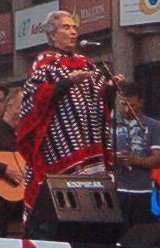
.jpg)
As of 2012 most Costa Ricans are primarily of Spanish or mestizo ancestry with minorities of German, Italian, Jamaican and Greek ancestry.
European migrants used Costa Rica to get across the isthmus of Central America as well to reach the USA West Coast (California) in the late 19th century and until the 1910s (before the Panama Canal opened). Other ethnic groups known to live in Costa Rica include Nicaraguan, Colombians,Venezuelans, Peruvian, Brazilians, Portuguese, Palestinians, Caribbeans, Turks, Armenians and Georgians.
Many of the first Spanish colonists in Costa Rica may have been Jewish converts to Christianity who were expelled from Spain in 1492 and fled to colonial backwaters to avoid the Inquisition.[35] The first sizable group of self-identified Jews immigrated from Poland, beginning in 1929. From the 1930s to the early 1950s, journalistic and official anti-Semitic campaigns fueled harassment of Jews; however, by the 1950s and 1960s, the immigrants won greater acceptance. Most of the 3,500 Costa Rican Jews today are not highly observant, but they remain largely endogamous.[36]
Costa Rica has four small minority groups: Mulattos, Afro, Amerindians and Asians. About 8% of the population is of African descent or Mulatto (mix of European and African) who are called Afro-Costa Ricans, English-speaking descendants of 19th century Afro Jamaican immigrant workers.
By the late twentieth century, allusions in textbooks and political discourse to "whiteness," or to Spain as the "mother country" of all Costa Ricans, were diminishing, replaced with a recognition of the multiplicity of peoples that make up the nation.[37]
El Salvador
.jpg)
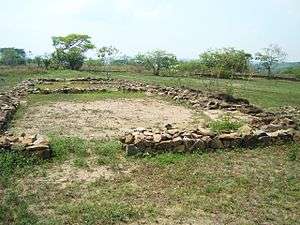
In Central America, intermarriage by European men with the Native American Indigenous Lenca, Cacaopera and Pipil women of what is now El Salvador happened almost immediately after the arrival of the European Spaniards led by Pedro de Alvarado. Other indigenous groups in the country such as Maya Poqomam people, Maya Ch'orti' people, Alaguilac, Xinca people, Mixe and Mangue language people became culturally extinct due to the Mestizo process or diseases brought by the Spaniards. Mestizo culture quickly became the most successful and dominant culture in El Salvador. The majority of Salvadorans in modern El Salvador identify themselves as 86.3% Mestizo roots.[38]
In 1932, ruthless dictator Maximiliano Hernandez Martinez was responsible for La Matanza ("The Slaughter"), known as the 1932 Salvadoran peasant massacre in which the Native American indigenous people were murdered in an effort to wipe out the indigenous people in El Salvador during the 1932 Salvadoran peasant uprising. Indigenous peoples, mostly of Lenca, Cacaopera and Pipil descent are still present in El Salvador in several communities, conserving their languages, customs, and traditions.
There is a significant Arab population (of about 100,000), mostly from Palestine (especially from the area of Bethlehem), but also from Lebanon. Salvadorans of Palestinian descent numbered around 70,000 individuals, while Salvadorans of Lebanese descent is around 27,000. There is also a small community of Jews who came to El Salvador from France, Germany, Morocco, Tunisia, and Turkey. Many of these Arab groups naturally mixed and contributed into the modern Salvadoran Mestizo population.
Pardo is the term that was used in colonial El Salvador to describe a tri-racial Afro-Mestizo person of Indigenous, European, and African descent. El Salvador is the only country in Central America that does not have a significant African population due to many factors including El Salvador not having a Caribbean coast, and because of president Maximiliano Hernández Martínez, who passed racial laws to keep Afros and other peoples out of El Salvador, though Salvadorans with African ancestry, called Pardos, were already present in El Salvador, the majority are tri-racial Pardo Salvadorans who largely cluster with the Mestizo population. They have been mixed into and were naturally bred out by the general Mestizo population, which is a combination of a Mestizo majority and the minority of Pardo people, both of whom are racially mixed populations. A total of only 10,000 enslaved Africans were brought to El Salvador over the span of 75 years, starting around 1548, about 25 years after El Salvador's colonization. The enslaved Africans that were brought to El Salvador during the colonial times, eventually came to mix and merged into the much larger and vaster Mestizo mixed European Spanish/Native Indigenous population creating Pardo or Afromestizos who cluster with Mestizo people, contributing into the modern day Mestizo population in El Salvador, thus, there remains no significant extremes of African physiognomy among Salvadorans like there is in the other countries of Central America.
Today, Salvadorans who are racially European, especially Mediterranean, as well as Native American indigenous people in El Salvador who do not speak indigenous languages nor have an indigenous culture, also tri-racial Pardo Salvadorans, and Salvadoran of Arab descent, also identify themselves as culturally Salvadoran Mestizo by absorption.
Guatemala
The Ladino population in Guatemala is officially recognized as a distinct ethnic group, and the Ministry of Education of Guatemala uses the following definition:
"The ladino population has been characterized as a heterogeneous population which expresses itself in the Spanish language as a maternal language, which possesses specific cultural traits of Hispanic origin mixed with indigenous cultural elements, and dresses in a style commonly considered as western."[39]
Spanish-speaking South America
Argentina and Uruguay
Initially colonial Argentina and Uruguay had a predominately mestizo population like the rest of the Spanish colonies, but due to a flood of European migration in the 19th century and the repeated intermarriage with Europeans the mestizo population became a so-called castizo population. With more Europeans arriving in the early 20th century, the majority of these immigrants coming from Spain and Italy, the face of Argentina and Uruguay has overwhelmingly become European in culture and tradition. Because of this, the term mestizo has fallen into disuse. Currently, individuals who are considered Whites contributes to 85% of Argentina's population and 88% of Uruguay's population.
Northern Argentina still has a predominately mestizo population, especially in the provinces of Jujuy, Salta, Tucumán, Santiago del Estero, Catamarca, La Rioja, Chaco, Formosa, and Corrientes, where there is also a significant population of Indigenous peoples.[31][40]
Chile
The Chilean race, as everybody knows, is a mestizo race made of Spanish conquistadors and the Araucanian...
In Chile, from the time the Spanish soldiers with Pedro de Valdivia entered northern Chile, a process of 'mestizaje' began where Spaniards began to mate with the local bellicose Mapuche population of Amerindians to produce an overwhelmingly mestizo population during the first generation in all of the cities they founded. In Southern Chile, the Mapuche, were one of the only Amerindian tribes in the Americas that were in continuous conflict with the Spanish Empire and did not submit to a European power.
A public health book from the University of Chile states that 30% of the population is of White origin; mestizos are estimated to amount to a total of 65%, while Native Americans (Amerindians) comprise the remaining 5%. A genetic study by the same university showed that the average Chilean's genes in the mestizo segment are 60% European and 40% Amerindian.
Colombia
Colombia whose land was named after explorer Christopher Columbus is the product of the interacting and mixing of the European conquistadors and colonist with the different Amerindian peoples of Colombia. Later the African element was introduced into the coastal parts of Colombia as enslaved people.
Over time Colombia has become a primarily Mestizo country due to limited immigration from Europe in the 19th and 20th centuries, with the minorities being: the Mulattoes and Pardos living primarily in the coastal areas; and pockets of Amerindians living around the rural areas and the Amazonian Basin regions of the country.
An extraofficial estimate considers that the 49% of the Colombian population is Mestizo or of mixed European and Amerindian ancestry. Approximately 37% is of European ancestry (predominantly Spanish, and a part of Italian, French, and German) and of Middle Eastern ancestry. 10.6% is of African ancestry. Indigenous Amerindians comprise 3.4% of the population. 0.01% of the population are Roma.[42] The 2005 census reported that the "non-ethnic population", consisting of Europeans and mestizos (those of mixed European and Amerindian ancestry), constituted 86% of the national population.[42]
Ecuador
During the colonial era, the majority of Ecuadorians were Amerindians and the minorities were the Spanish Conquistadors, who came with Francisco Pizarro and Sebastian de Benalcazar. With the passage of time these Spanish conquerors and succeeding Spanish colonists sired offspring with the local Amerindian population, since Spanish immigration did not initially include many White females to the colonies. In a couple of generations a predominately mestizo population emerged in Ecuador with a drastically declining Amerindian Population due to European diseases and wars.
Afro-Ecuadorians (Zambos and Mulattoes), who are a minority in the country, can be found mostly in the Esmeraldas Province, in the Valle del Chota of the Imbabura Province, and as small communities of Afro-Ecuadorians living along the coastal areas as minorities.
Mestizos are by far the largest of all the ethnic groups, and comprise 71.9% of the current population. The next 28% of the population is comprised by four ethnic groups with about 7% each, the Montubios, Afro-Ecuadorian, Amerindian (Indigenous) and White.
Paraguay
During the reign of José Gaspar Rodríguez de Francia, the first consul of Paraguay from 1811 to 1840, he imposed a law that no Spaniard may intermarry with another Spaniard, and that they may only wed mestizos or Indians. This was introduced to eliminate any sense of racial superiority, and also to end the predominantly Spanish influence in Paraguay. De Francia himself was not a mestizo (although his paternal grandfather was Afro-Brazilian), but feared that racial superiority would create class division which would threaten his absolute rule.
As a result of this, today 90% of Paraguay's population are mestizo, and the main language is the native Guaraní, spoken by 60% of the population as a first language, with Spanish spoken as a first language by 40% of the population, and fluently spoken by 75%, making Paraguay one of the most bilingual countries in the world. Although it did not had the exposition to miscegenation as de Francia wanted, after the tremendous decline of male population as a result of the War of the Triple Alliance, European male worker émigrés mixed with the female mestizo population so as that pushed a middle class of mestizo background largely accepted as a configuration of the country.
Peru

According to Alberto Flores Galindo, "By the 1940 census, the last that utilized racial categories, mestizos were grouped with White, and the two constituted more than 53% of the population. Mestizos likely outnumbered Indians and were the largest population group."[43]
Venezuela
Mestizos are the majority in Venezuela, accounting for 51.6% of the country's population. According to D'Ambrosio[44] 57.1% of mestizos have mostly European characteristics, 28.5% have mostly African characteristics and 14.2% have mostly Amerindian characteristics.
Notable mestizos migrating to Europe
Martín Cortés, son of the Spanish conquistador Hernán Cortés and of the Nahuatl–Maya indigenous Mexican interpreter Malinche, was one of the first documented mestizos to arrive in Spain. His first trip occurred in 1528, when he accompanied his father, Hernán Cortés, who sought to have him legitimized by the Pope.
There is also verified evidence of the grandchildren of Moctezuma II, Aztec emperor, whose royal descent the Spanish crown acknowledged, willingly having set foot on European soil. Among these descendants are the Counts of Miravalle, and the Dukes of Moctezuma de Tultengo, who became part of the Spanish peerage and left many descendants in Europe.[45] The Counts of Miravalle, residing in Andalucía, Spain, demanded in 2003 that the government of Mexico recommence payment of the so-called 'Moctezuma pensions' it had cancelled in 1934.
The mestizo historian Inca Garcilaso de la Vega, son of Spanish conquistador Sebastián Garcilaso de la Vega and of the Inca princess Isabel Chimpo Oclloun arrived in Spain from Peru. He lived in the town of Montilla, Andalucía, where he died in 1616. The mestizo children of Francisco Pizarro were also military leaders because of their famous father. Starting in the early 19th and throughout the 1980s, France and Sweden saw the arrival of hundreds of Chileans, many of whom fled Chile during the dictatorial government of Augusto Pinochet.
Hispanic Asia and Oceania

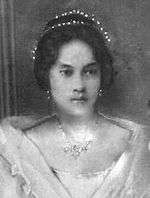
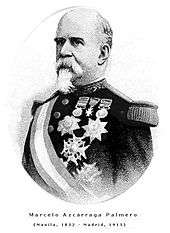
Philippines
In the Philippines, the word "mestizo"[9] is sometimes shortened to the diminutive tisoy in modern colloquial usage. In modern times, it generally denotes Filipinos of mixed Austronesian and any non-native, usually White, ethnicity.
Mestizos in the Philippines are traditionally a blend of Austronesian, Chinese, Spanish, or Latin American ancestry and are primarily descendants of viajeros (sailors who plied the Manila-Acapulco Galleon route), soldados (soldiers) and negociantes (merchants who were primarily Spanish, Chinese, or themselves mestizos). Because of this, most mestizos in the Philippines are concentrated in the urban areas and large towns of the islands such as Manila, Iloilo, Zamboanga, Cebu and Vigan where Spaniards and foreign merchants are more likely to intermarry with the rich and landed native aristocracy.[46] Their descendants emerged later to become an influential part of the colonial government, and of the Principalía,[47] among whom were Manuel L. Quezon, the first President of the Commonwealth of the Philippines (1935–1944); and Marcelo Azcárraga Palmero who even became interim Prime Minister of Spain on 8 August 1897 until 4 October of that same year. Azcárraga also went on to become Prime Minister of Spain again in two more separate terms of office. In 1904, he was granted Knighthood in the very exclusive Spanish chilvalric Order of the Golden Fleece — the only mestizo recipient of this prestigious award.
More recent migrations and interracial marriages beginning in the 20th century resulted in a greater variety of racial admixture with White Americans and other Asians.
Guam and Northern Mariana Islands
In Guam and Northern Mariana Islands, the term "mestizo" was borrowed from the Spanish language and was formerly used to identify people of mixed Pacific Islander and Spanish ancestry; however, as the United States gained control of these islands after the Spanish–American War in 1898, the term "Multiracial" replaced "Mestizo".
Mestizos/Multiracials currently form a small minority of the population. Because most Guamanians and Northern Mariana Islanders were also given Spanish surnames as part of the Spanish East Indies, persons of white American and other non-Spanish European descent with Spanish surnames may be mistaken as having such descent.
Former Portuguese colonies
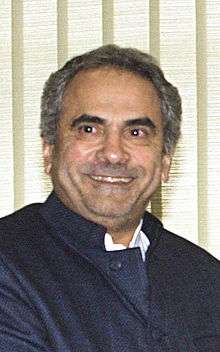
Lusophone South America
Brazilian mestiço
In Brazil, the word mestiço is used to describe individuals born from any mixture of different ethnicity, not specifying any relation to Amerindian or European descent whatsoever. The Mixed Ethnicty Day, or Mestizo Day (Dia do Mestiço), on 27 June, is official event in States of Amazonas, Roraima e Paraíba and a holyday in two cities.
One of the most notorious group is the pardo (brown people), also informally known as moreno (tan skinned people; given its euphemism-like nature, it may be interpreted as offensive). They include mostly those of non-white skin color. Nevertheless, not all pardos are mestiços. For example, an Amerindian (initially and most often índio, often more formally indígena, rarely ameríndio, an East Indian (indiano)) or a Filipino may be initially described as pardo/parda (in opposition to branco, white, negro, Afro, and amarelo, yellow) if his or her ethnicity is unknown, and it is testified by the initial discovery reports of Portuguese navigators. In the same way, mestiço, a term used to describe anyone with any degree of miscegenation in one's blood line, may apply to all said groups (that in Portugal and its ex-colonies, always depended solely on phenotype, meaning a brown person may have a full sibling of all other basic phenotypes and thus ethnic groups).
Important pardo groups in Brazil are the caboclos (largely contemporary usage) or mamelucos (largely archaic usage), the mulatos, and the cafuzos. The first group is composed of the culturally assimilated Amerindians as well as the brown-skinned descendants or children of both white or moreno (swarthy) people of otherwise White phenotype and Amerindians. They are an important group in the Northern (Amazon Basin) region, but also relatively numerous on the Northeastern and Center-Western ones. Then, those, neither Afro- nor fair-skinned, whose origins come from the admixture between White or morenos and Afros or cafuzos. The last group is composed of descendants of Amerindians or caboclos and Afros or other cafuzos. Finally, those whose origins possess a notorious level of European ancestry and in which neither Amerindian nor African phenotypical traces are much more present than each other are sometimes known as juçaras.

There are, however, important groups who are mestiços but not necessarily pardos. People of East Asian and non-Asian descent combined are known as ainokos, from the Japanese "love (ai) child (ko)" (also used for all children of illegitimate birth. Mixed children are now largely referred to as "half" or hāfu), though often, for those without contact with the term, mestiço de [East Asian nationality/ethnicity] may also be used. Sararás differ from mulatos at being fair-skinned (rather than brown-skinned), and having non-straight blond or red hair.
Other people who are not brown (and thus not pardo), but also their phenotypes by anything other than skin, hair and eye color do not match white ones but rather those of people of color may be just referred to as mestiço, without specification to skin color with an identitarian connotation (there are the distinctions, though, of mestiço claro, for the fair-skinned ones, and mestiço moreno, for those of olive skin tones). In Brazilian censuses, those people may choose to identify mostly with branco (White) or pardo (brown) or leave the question on ethnic/color blank.
Lusophone Africa
Angolan mestiço
The mestiço are primarily of mixed European, native born indigenous Angolan or other indigenous African lineages. They tend to be Portuguese culturally and to have full Portuguese names.
Although they make up about two percent of the population, they are the socially elite and racially privileged group in the country. Historically, mestiços formed social and cultural allegiances with Portuguese colonists subsequently identifying with the Portuguese over and above their indigenous identities. Despite their loyalty, the ethnic group faced economic and political adversity at hands of the white population during times of economic hardship for whites. These actions lead to ostracizing Mestiços from their inherited economic benefits which sparked the group to take a new sociopolitical direction.
Across the 500-year Portuguese presence in the country, the Mestiço have retained their position of entitlement which is highly evident in the political, economic and cultural hierarchy in present-day Angola. Their phenotype range is broad with a number of members possessing physical characteristics that are close to others within the indigenous Afro non-mixed population. Since the Mestiços are generally better educated than the rest of the indigenous Afro population, they exercise influence in government disproportionate to their numbers.
Bissau-Guinean mestiço
1% of the population is of mixed African and Portuguese descent, Tamahaq, and Arabic genetic influence ignored.
Mozambican mestiço
A minority population of Mozambicans of mixed Bantu and Portuguese heritage.
Mestiços of São Tomé and Príncipe
Mestiços of São Tomé and Príncipe are descendants of Portuguese colonists and enslaved Africans brought to the islands during the early years of settlement from Benin, Gabon, the Republic of the Congo, the Democratic Republic of the Congo, and Angola (these people also are known as filhos da terra or "children of the land").
Lusophone Asia
French-speaking North America
Métis of Canada
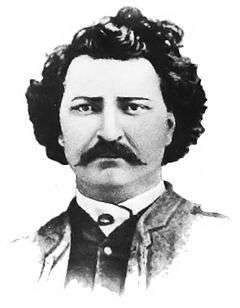
A French Colonial empire in Canada, the Métis are regarded as an independent ethnic group. This community of descent consists of individuals descended from marriages of First Nation women, specifically Cree, Ojibway, and Saulteaux with Europeans, usually French, English, and Scottish laborers or merchants employed in the North American Fur Trade. Their history dates to the mid-17th century, and they have been recognized as a distinct people since the early 18th century.
Traditionally, the Métis spoke a mixed language called Michif (with various regional dialects). Michif (a phonetic spelling of the Métis pronunciation of "Métif", a variant of Métis) is also used as the name of the Métis people. The name is most commonly applied to descendants of communities in what is now southern Manitoba. The name is also applied to the descendants of similar communities in what are now Ontario, Quebec, Labrador, and the Northwest Territories, although these groups' histories are different from that of the western Métis. In Northern Manitoba some communities spoke Bungee, a combination of Gaelic, Orcadian, Cree, and Ojibwe. Bungee is now extinct.
Estimates of the number of Métis vary from 300,000 to 700,000 or more. In September 2002, the Métis people adopted a national definition of Métis for citizenship within the "Métis Nation." Based on this definition, it is estimated that there are 350,000 to 400,000 Métis Nation citizens in Canada, although many Métis classify anyone as Métis who can prove that an ancestor applied for money scrip or land scrip as part of nineteenth-century treaties with the Canadian government. However, Labrador, Quebec, and even some Acadian Métis communities are not accepted by the Métis National Council and are represented nationally by the "Congress of Aboriginal Peoples."
The Métis are recognized as Aboriginal, but not as a First Nation by the Canadian government and do not receive the same benefits granted to First Nation peoples. However, the 1982 amendments to the Canadian constitution recognize the Métis as an aboriginal people, and have enabled individual Métis to sue successfully for recognition of their traditional rights such as rights to hunt and trap. In 2003, a court ruling in Ontario found that the Métis deserve the same rights as other aboriginal communities in Canada.
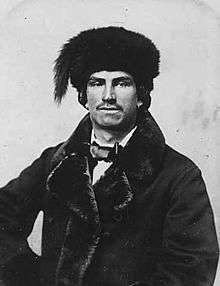 Métis fur trader, c. 1870
Métis fur trader, c. 1870 The Trapper's Bride
The Trapper's Bride
by Alfred Jacob Miller, 1837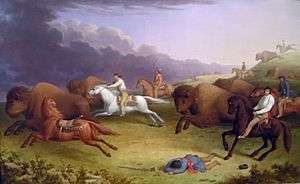 Paul Kane's oil painting "Half-Breeds Running Buffalo" depicts a Métis buffalo hunt on the prairies of Dakota in June 1846.
Paul Kane's oil painting "Half-Breeds Running Buffalo" depicts a Métis buffalo hunt on the prairies of Dakota in June 1846.
Mestizo of Saint Barthélemy
In Saint Barthélemy, the term mestizo refers to people of mixed European (usually French) and East Asian ancestry.[12]
English-speaking North America
Canada
Anglo-Métis
A 19th-century community of the Métis people of Canada, the Anglo-Métis, more commonly known as 'Countryborn', were children of fur traders; they typically had Orcadian, Scottish, or English fathers and Aboriginal mothers. Their first languages were generally those of their mothers: Cree, Saulteaux, Assiniboine, etc. and English. Some of their fathers spoke Gaelic or Scots, leading to the development of the dialect of English known as "Bungee".
United States
The United States has a large mestizo population, as many Hispanic Americans of Mexican or Central American or South American descent are technically mestizo. However, the term "mestizo" is not used for official purposes, with Mexican Americans being classed in roughly equal proportions as "white" or "some other ethnicity" (see links), and the term "mestizo" is not in common popular use within the United States.
Many Mexican-Americans use the term Chicano, which has a strong connection with their Native heritage.
Mestizaje in Latin America
Mestizaje ([mes.tiˈsa.xe]) is a term that came into usage in twentieth-century Latin America for racial mixing, not a colonial-era term.[48] In the modern era, it is used to denote the positive unity of race mixtures in modern Latin America. This ideological stance is in contrast to the term miscegenation, which usually has negative connotations.[49] The main ideological advocate of mestizaje was José Vasconcelos (1882–1959), the Mexican Minister of Education in the 1920s. The term was in circulation in Mexico in the late nineteenth century, along with similar terms, cruzamiento ("crossing") and mestización (process of "mestizo-izing"). In Spanish America, the colonial-era system of castas sought to differentiate between individuals and groups on the basis of a hierarchical classification by ancestry, skin color, and status (calidad), giving separate labels to the perceived categorical differences and privileging whiteness. In contrast, the idea of modern mestizaje is the positive unity of a nation's citizenry based on racial mixture. "Mestizaje placed greater emphasis [than the casta system] on commonality and hybridity to engineer order and unity... [it] operated within the context of the nation-state and sought to derive meaning from Latin America's own internal experiences rather than the dictates and necessities of empire... ultimately [it] embraced racial mixture."[50]
In post-revolution Mexico
At independence in Mexico, the casta classifications were abolished, but discrimination based on skin color and socioeconomic status continued. Liberal intellectuals grappled with the "Indian Problem", that is, the Indians' lack of cultural assimilation to Mexican national life as citizens of the nation, rather than members of their indigenous communities. Urban elites spurned mixed-race urban plebeians and Indians along with their traditional popular culture. In the late nineteenth century during the rule of Porfirio Díaz, elites sought to be, act, and look like modern Europeans, that is, different from the majority of the Mexican population. Díaz was mixed-race himself, but powdered his dark skin to hide his Mixtec indigenous ancestry. At the end of the nineteenth century, however, as social and economic tensions increased in Mexico, two major works by Mexican intellectuals sought to rehabilitate the assessment of the mestizo. Díaz's Minister of Education, Justo Sierra published The Political Evolution of the Mexican People (1902), which situated Mexican identity in the mixing of European whites and Indians. Mexicans are "the sons of two peoples, of two races. [This fact] dominates our whole history; to this we owe our soul."[51] Intellectual Andrés Molina Enríquez also took a revisionist stance on mestizos in his work Los grandes problemas nacionales (The Great National Problems) (1909).
The Mexican state after the Mexican Revolution (1910–20) embraced the ideology of mestizaje as a nation-building tool, aimed at integrating Indians culturally and politically in the construction of national identity. As such it has meant a systematic effort to eliminate indigenous culture, in the name of integrating them into a supposedly inclusive mestizo identity. For Afro-Mexicans, the ideology has denied their historical contributions to Mexico and their current place in Mexican political life. Mexican politicians and reformers such as José Vasconcelos and Manuel Gamio were instrumental in building a Mexican national identity on the concept of "mestizaje" (the process of ethnic homogenization).[52][53]
Cultural policies in early post-revolutionary Mexico were paternalistic towards the indigenous people, with efforts designed to "help" indigenous peoples achieve the same level of progress as the Mestizo society, eventually assimilating indigenous peoples completely to mainstream Mexican culture, working toward the goal of eventually solving the "Indian problem" by transforming indigenous communities into Mestizo communities.[6]
In recent years, mestizos’ sole claim to Mexican national identity has begun to erode, at least rhetorically."[54] A constitutional changes to Article 4 that now says that the "Mexican Nation has a pluricultural composition, originally based on its indigenous peoples. The law will protect and promote the development of their languages, cultures, uses, customs, resources, and specific forms of social organization and will guarantee their members effective access to the jurisdiction of the State."
Elsewhere in Latin America
There has been considerable work on race and race mixture in various parts of Latin America in recent years. Including South America;[55] Venezuela[56] Brazil,[57] Peru[58] and Colombia.[59]
See also
- Arab-Berber
- Brown (racial classification)
- Bronze (racial classification)
- Casta
- Castizo
- Coloured
- Eurasian (mixed ancestry)
- European colonization of the Americas
- Indigenous peoples of the Americas
- Indo people
- Luk khrueng
- Melting pot
- Mischling
- Mixed-blood
- Mulatto
- Spanish colonization of the Americas
- Tisoy
- Genocide of indigenous peoples
- Zambo
References
- "the definition of mestizo". Dictionary.com. Retrieved 15 October 2017.
- Rappaport, The Disappearing Mestizo, p. 4
- Rappaport, Joanne. The Disappearing Mestizo, p. 247.
- Lewis, Stephen. “Mestizaje” in The Encyclopedia of Mexico. Chicago: Fitzroy Dearborn 1997, p. 840.
- "en el censo de 1930 el gobierno mexicano dejó de clasificar a la población del país en tres categorías raciales, blanco, mestizo e indígena, y adoptó una nueva clasificación étnica que distinguía a los hablantes de lenguas indígenas del resto de la población, es decir de los hablantes de español". Archived from the original on 23 August 2013.
- Bartolomé, Miguel Alberto (1996). "Pluralismo cultural y redefinicion del estado en México" (PDF). Coloquio sobre derechos indígenas. Oaxaca: IOC. p. 5. ISBN 978-968-6951-31-8.
- Knight, Alan (1990). "Racism, Revolution and indigenismo: Mexico 1910–1940". In Graham, Richard (ed.). The Idea of Race in Latin America, 1870–1940. Austin: University of Texas Press. pp. 73. ISBN 978-0-292-73856-0.
- "mestizo". Merriam-Webster's Online Dictionary. Merriam-Webster, Incorporated. 2008.
a person of mixed blood; specifically: a person of mixed European and American Indian indigenous ancestry
- "Mestizo – Define Mestizo at Dictionary.com". Dictionary.com. Retrieved 29 March 2015.
- Alfonso X (1275). General Estoria. Primera parte. Spain. p. 261R.
- Herbst, Philip (1997). The Color of Words: An Encyclopædic Dictionary of Ethnic Bias in the United States. Yarmouth: Intercultural Press. p. 144. ISBN 978-1-877864-42-1.
- "Saint Barthelemy: People and Society". The World Factbook. Central Intelligence Agency. 13 September 2012. Retrieved 19 November 2012.
- Rappaport, Joanne, The Disappearing Mestizo: Configuring Difference in the Colonial New Kingdom of Granada. Durham: Duke University Press 2014, pp.208-09.
- Mörner, Race Mixture, p.58.
- Mörner, Race Mixture, p. 55.
- Lewis, Laura A. Hall of Mirrors: Power, Witchcraft, and Caste in Colonial Mexico. Durham: Duke University Press 2003, p. 84.
- Sr. Don Pedro Alonso O’Crouley, A Description of the Kingdom of New Spain (1774),trans. and ed. Sean Galvin. San Francisco: John Howell Books, 1972, 20
- O’Crouley, “A Description of the Kingdom of New Spain’’, p. 20
- Lewis, Hall of Mirrors, pp. 86-91.
- Peter N. Stearns & William L. Langer (2001). Encyclopedia of World History:Ancient, Medieval, and Modern, Chronologically Arranged. Houghton Mifflin Books.
- "Venezuela – ETHNIC GROUPS". Countrystudies.us. Retrieved 29 March 2015.
- "El Desafío de la Historia". Eldesafiodelahistoria.com. Retrieved 15 October 2017.
- "Al respecto no debe olvidarse que en estos países buena parte de las personas consideradas biológicamente blancas son mestizas en el aspecto cultural, el que aquí nos interesa (p. 196)" (PDF). Redalyc.org. 16 March 2005. Archived from the original (PDF) on 22 October 2013. Retrieved 27 June 2013.
- Bartolomé, Miguel Alberto (1996). "Pluralismo cultural y redefinicion del estado en México" (PDF). Coloquio sobre derechos indígenas. Oaxaca: IOC. p. 2. ISBN 978-968-6951-31-8.
- Wade, Peter (1997). Race and Ethnicity in Latin America. Chicago: Pluto Press. pp. 44–47. ISBN 978-0-7453-0987-3.
- "Mexico- Ethnic groups". Encyclopædia Britannica. Retrieved 1 October 2016.
- González Sobrino, Blanca Zoila; Silva Zolezzi, Irma; Sebastián Medina, Leticia (2010). "Miradas sin rendicíon, imaginario y presencia del universo indígena" (PDF) (in Spanish). INMEGEN. pp. 51–67. Archived from the original (PDF) on 5 July 2015. Retrieved 8 March 2015.
- "El archivo del estudio de racismo en Mexico". Scielo.org.mx. Archived from the original on 4 August 2017. Retrieved 15 October 2017.
- "El mestizaje en Mexico" (PDF). Archived from the original (PDF) on 1 August 2017. Retrieved 15 December 2018.
- Martínez-Cortés, Gabriela; Salazar-Flores, Joel; Gabriela Fernández-Rodríguez, Laura; Rubi-Castellanos, Rodrigo; Rodríguez-Loya, Carmen; Velarde-Félix, Jesús Salvador; Franciso Muñoz-Valle, José; Parra-Rojas, Isela; Rangel-Villalobos, Héctor (September 2012). "Admixture and population structure in Mexican-Mestizos based on paternal lineages". Journal of Human Genetics. 57 (9): 568–574. doi:10.1038/jhg.2012.67. PMID 22832385.
- J.K. Estrada; A. Hidalgo-Miranda; I. Silva-Zolezzi; G. Jimenez-Sanchez. "Evaluation of Ancestry and Linkage Disequilibrium Sharing in Admixed Population in Mexico". ASHG. Archived from the original on 16 January 2013. Retrieved 18 July 2012.
- Silva-Zolezzi, Irma; Hidalgo-Miranda, Alfredo; Estrada-Gil, Jesus; Fernandez-Lopez, Juan Carlos; Uribe-Figueroa, Laura; Contreras, Alejandra; Balam-Ortiz, Eros; del Bosque-Plata, Laura; Velazquez-Fernandez, David; Lara, Cesar; Goya, Rodrigo; Hernandez-Lemus, Enrique; Davila, Carlos; Barrientos, Eduardo; March, Santiago; Jimenez-Sanchez, Gerardo (26 May 2009). "Analysis of genomic diversity in Mexican Mestizo populations to develop genomic medicine in Mexico". Proceedings of the National Academy of Sciences of the United States of America. 106 (21): 8611–8616. Bibcode:2009PNAS..106.8611S. doi:10.1073/pnas.0903045106. PMC 2680428. PMID 19433783.
- Ladino en el Diccionario de la Real Academia Española (DRAE)
- Soto-Quiros, Ronald (2006). "Reflexiones sobre el mestizaje y la identidad nacional en Centroamérica: de la colonia a las Républicas liberales" (PDF). Boletín No. 25. AFEHC. Asociación para el Fomento de los Estudios en Centroamérica, "Mestizaje, Raza y Nación en Centroamérica: identidades tras conceptos, 1524-1950". Octubre 2006. (in Spanish). Archived from the original (PDF) on 26 August 2011.
- "The Jewish Community in Costa Rica". Retrieved 29 March 2015.
- "Culture of Costa Rica - history, people, women, beliefs, food, customs, family, social, marriage". Retrieved 29 March 2015.
- "Culture of Costa Rica - history, people, women, beliefs, food, customs, family, social, marriage". www.everyculture.com.
- Ethnic Groups -2007 official Census. Page 13, Digestyc.gob.sv
- Ministerio de Educación (MINEDUC) (2008). "Reflexiones sobre el mestizaje y la identidad nacional en Centroamérica: de la colonia a las Républicas liberales" (in Spanish). Retrieved 28 July 2008.
- Encyclopædia Britannica. Book of the Year (various issues). Britannica World Data: Argentina.
- Palacios, Nicolás (1918) [1904]. La raza chilena (in Spanish). p. 34.
- Bushnell, David; Hudson, Rex A. (2010). "The Society and Its Environment" (PDF). Colombia: a Country Study. pp. 63–139. ISBN 978-0-8444-9502-6. Archived from the original (PDF) on 15 February 2013.
- Galindo, Alberto Flores (2010). In Search of an Inca: Identity and Utopia in the Andes. Cambridge University Press. p. 247. ISBN 978-0-521-59861-3.
- D'Ambrosio, B. L'emigrazione italiana nel Venezuela. Edizioni "Universitá degli Studi di Genova". Genova, 1981
- "La descendencia española de Moctezuma reclama pago de Mexico". El Noticiero de Alvarez Galloso. 30 December 2007. Retrieved 29 March 2015.
- Also v.encomienda; hacienda
- "The impact of Spanish rule in the Philippines". Seasite.niu.edu. Archived from the original on 1 October 2007. Retrieved 15 October 2017.
- Rappaport, Joanne. The Disappearing Mestizo, p. 247.
- Lewis, Stephen. "Mestizaje" in The Encyclopedia of Mexico. Chicago: Fitzroy Dearborn 1997, p. 840.
- Vinson, Ben III. Before Mestizaje. New York: Cambridge University Press 2018, pp. 61-2.
- Sierra, Justo. The Political Evolution of the Mexican People. Trans. Charles Ramsdell. Austin: University of Texas Press. P. xvii.
- Wade, Peter (1997). Race and Ethnicity in Latin America. Chicago: Pluto Press. p. 3. ISBN 978-0-7453-0987-3.
- Knight, Alan (1990). "Racism, Revolution and indigenismo: Mexico 1910–1940". In Graham, Richard (ed.). The Idea of Race in Latin America, 1870–1940. Austin: University of Texas Press. pp. 78–85. ISBN 978-0-292-73856-0.
- Lewis, "Mestizaje', p. 841.
- Hale, Charles R., ‘Mestizaje, Hybridity and the Cultural Politics of Difference in Post-Revolutionary Central America,’Journal of Latin American Anthropology, vol. 2, no. 1 (1996)
- Winthrop Wright, Cafe ́Con Leche: Race, Class and National Image in Venezuela. Austin: University of Texas Press 1990
- Sueann Caulfield, ‘Interracial Courtship in the Rio de Janeiro Courts, 1918–1940,’ in Nancy P. Appelbaum, Anne S. Macpherson and Karin A. Rosemblatt (eds.) in Race and Nation in Modern Latin America. Chapel Hill: University of North Carolina Press, 2003
- Marisol de la Cadena,Indigenous Mestizos: The Politics of Race and Culture in Cuzco, 1919–1991. Durham: Duke University Press 2000
- Wade, Peter, Blackness and Race Mixture: The Dynamics of Racial Identity in Colombia. Baltimore: Johns Hopkins University Press 1993
Further reading
- Ades Queija, Berta. "Mestizos en hábito de indios: Estraegias transgresoras o identidades difusas?" Pasar as fronteiras: Actas do II Colóqyui Internacional sobre Mediadores Culturais, séculos XV a XVIII (Lagos-Outubro 1997). Ed. Rui Manuel Loureiro and Serge Gruzinski, 122-46. Lagos, Nigeria: Centro de Estudios Gil Eanes 1999.
- Batalla, Guillermo; Dennis, Philip (1996). Mexico Profundo: Reclaiming A Civilization. Univ of Texas Pr. ISBN 978-0-292-70843-3.
- Becker, Marc. "The Limits of Indigenismo in Ecuador." Latin American Perspectives, vol. 39, no. 5, 2012, pp. 45–62., doi:10.1177/0094582x12447273.
- Bonil Gómez, Katherine. Gobierno y calidad en el orden colonial: Las categorías del mestizaje en la provincia de Mariquita en la segunda mitad del siglo XVIII. Bogotá: Ediciones Uniandes 2011.
- Chance, John K. Race and Class in Colonial Oaxaca. Stanford: Stanford University Press 1978.
- Cope, R. Douglas. The Limits of Racial Domination: Plebeian Society in Col-515.onial Mexico City, 1660-1720. Madison: University of Wisconsin Press 1994.
- de la Cadena, Marisol. "Are Mestizos Hybrids?: The Conceptual Politics of Andean Identities." Journal of Latin American Studies 37 (2005): 259-84.
- de la Cadena, Marisol. Indigenous Mestizos: The Politics of Race and Culture in Cuzco, Peru 1919-1991. Durham: Duke University Press 2000.
- Duno Gottberg, Luis (2003). Solventando las diferencias: la ideología del mestizaje en Cuba. Madrid: Iberoamericana. ISBN 978-84-8489-091-1.
- Fisher, Andrew B. and Matthew O'Hara, eds. Imperial Subjects: Race and Identity in Colonial Latin America. Durham: Duke University Press 2009.
- Frederick, Jake. "Without Impediment: Crossing Racial Boundaries in Colonial Mexico." The Americas 67. 4 (2011): 495-515.
- Graubart, Karen. "The Creolization of the New World: Local Forms of Identification in Urban Colonial Peru, 1560-1640." Hispanic American Historical Review 89.3 (200(): 472-99.
- Gruzinski, Serge. The Mestizo Mind: The Intellectual Dynamics of Colonization and Globalization. Trans. Deke Dusinberre. Longon: Routledge 2002.
- Hill, ruth. "Casta as Culture and the Sociedad de Castas as Literature." Interpreting Colonialism. Ed. Philip Stueward and byron Wells, 231-59. Oxford: Voltaire Foundation 2004.
- Katzew, Ilona. Casta Painting: Images of Race in Eighteenth-Century Mexico. New Haven: Yale University Press 2004.
- Leibsohn, Dana, and Barbara E. Mundy, "Reckoning with Mestizaje," Vistas: Visual Culture in Spanish America, 1520-1820 (2015). http://www.fordham.edu/vistas.
- Lewis, Laura. Hall of Mirrors: Power, Witchcraft, and Caste in Colonial Mexico. Durham: Duke University Press 2003.
- Martinez, Maria Elena. "Interrogating Blood Lines: "Purity of Blood," the Inquisition, and Casta categories." in Religion in New Spain. ed. Susan Schroeder and Stafford Poole, 196-217. Albuquerque: University of New Mexico Press 2007.
- Mörner, Magnus. Race Mixture in the History of Latin America. Boston: Little, Brown 1967,
- Rappaport, Joanne. The Disappearing Mestizo: Configuring Difference in the Colonial Kingdom of Granada. Durham: Duke University Press 2014. ISBN 978-0-8223-5636-3
- Schwaller, Robert C. "The Importance of Mestizos and Mulatos as Bilingual Intermediaries in Sixteenth-Century New Spain." Ethnohistory 59.4 (2012): 713-38.
- "Genetic Study Of Latin Americans Sheds Light On A Troubled History". Science Daily.
- Vinson, Ben III. Before Mestizaje: The Frontiers of Race and Caste in Colonial Mexico. New York: Cambridge University Press 2018.
- Wang, S.; Ray, N.; Rojas, W.; Parra, M. V.; Bedoya, G.; et al. (2008). "Geographic Patterns of Genome Admixture in Latin American Mestizos". PLOS Genet. 4 (3): e1000037. doi:10.1371/journal.pgen.1000037. PMC 2265669. PMID 18369456.
External links
| Wikimedia Commons has media related to Mestizo. |
| Wikimedia Commons has media related to Casta paintings. |
| Wikiquote has quotations related to: Mestizo |
- The 1921 Mexican Census
- The Construction and Function of Race: Creating The Mestizo

- Copy of the Mestizo Day law - City of Manaus
- Copy of the Mestizo Day law - State of Amazon
- Copy of the Mestizo Day law - State of Roraima
- Copy of the Mestizo Day law - State of Paraíba
- Mestizo Nation Movement
- Legislative Assembly pays tribute to the caboclos and all Mestizos
